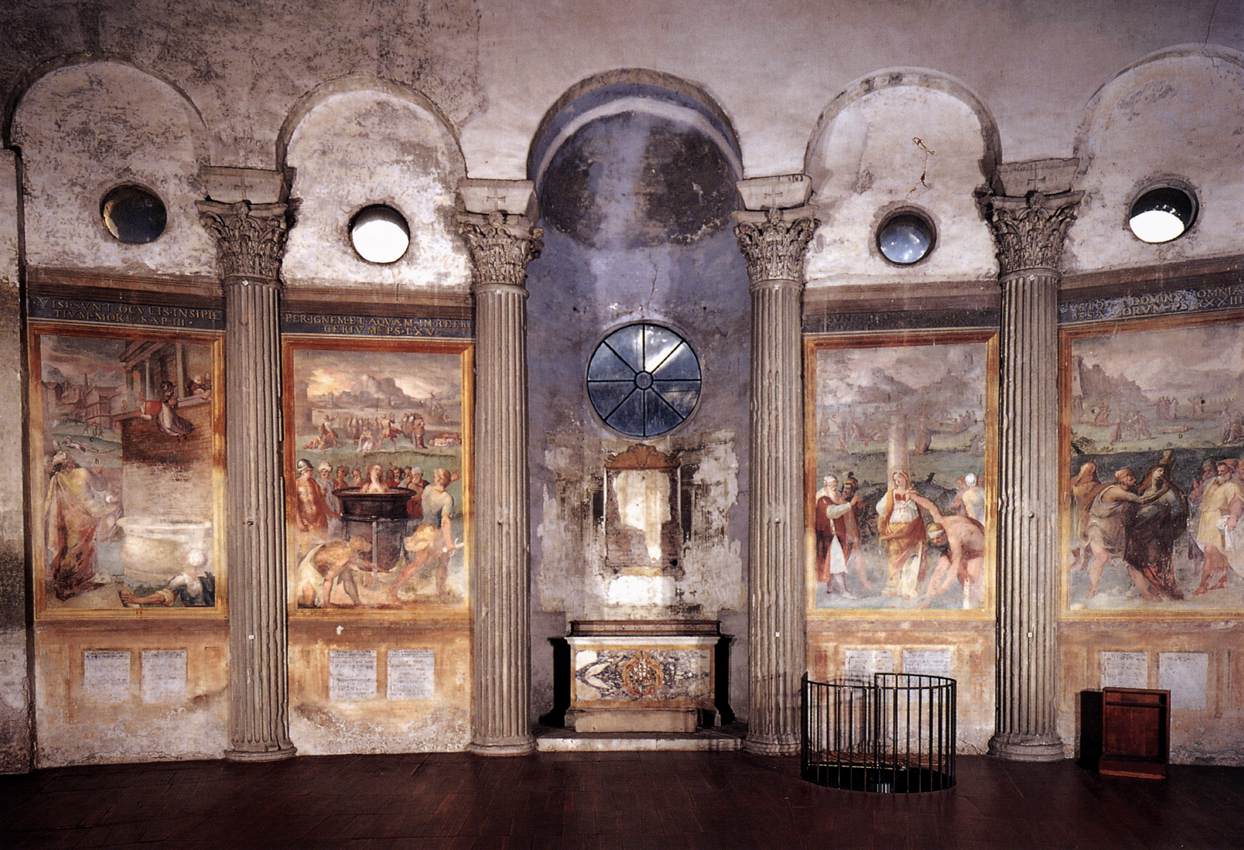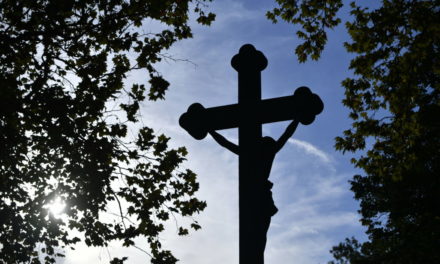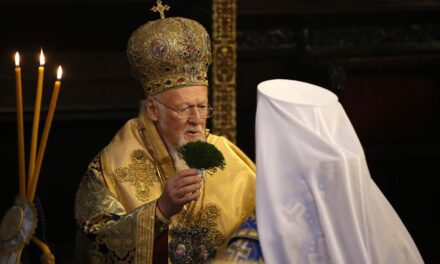Continuing the history of our pilgrimage houses founded by St. Stephen, after the Roman pilgrimage house, it is worth mentioning the Hungarian Pauline church also located in Rome.
Even during the existence of this old Roman pilgrimage house, in 1450, our Hungarian-founded Pauline order settled in Rome. It was typical of the order's influence at that time that they were able to receive a church in this central area from Pope Miklós V. At the time, the building was still in ruins, but it allowed the people of Paul to set foot in the "Eternal City", moreover, in the immediate vicinity of the Roman Forum and the Colosseum.
This was the Santo Stefano Rotondo, which was considered one of the celebrities of ancient Christian Rome. The church was built on the hill of Caelius – the second in Europe, after Bologna – as a copy of the Church of the Holy Sepulcher in Jerusalem.The dilapidated, ancient building - as the order's financial situation at the time made it possible - was restored by the Paulines themselves, with the help of one of the most important architects and sculptors of the time, Bernardino Rossellini from Florence. The building had its own water supply and its own well, whose marble blockstone was decorated with the coat of arms of the Hungarian king Sigismund.
The maintenance of the house and the church was ensured by the people of Paul without papal help, because they had a larger property north of the city and were able to cover their expenses from its income. In this area, "to this day, the rare icon of the Virgin Mary, which, according to legend, was taken out of Hungary from the Turks", can be read in Júlia Sárközy: "Vándor... Our common homeland was Rome and it will remain". in his article (issue 46 of the "Europai utas" magazine).
This Byzantine painting was brought from Hungary by the Pauline monks on mules, and when it was hung on the branch of a fig tree, a miracle immediately occurred, which was immortalized in the frescoes of the nearby Santa Maria di Galeria church.
Among others, the Pauline monk János Lászai (Johannes Lazo) is buried in Santo Stefano Rotondo, who in the 16th century was a famous confessor and well-known orator of St. Peter's Basilica, and in 1523 fell victim to the plague that devastated the city.
From 1580, the Collegium Hungaricum and later the Collegium Hungaricum-Germanicum institution operated in the building.
In 1776 - after the demolition of the Hungarian Pilgrim House - the altar of Santo Stefano Rotondo was consecrated in honor of Saint Stephen, Saint Imre and Saint László. Later, in honor of King Szent István, a separate chapel was even built in the rotunda part of the church. From that time on, the building became the national church of the Hungarians in Rome, and it fulfills its function to this day.
In 1927, the Hungarian Academy of Sciences and the Pontifical Hungarian Institute jointly bought it on the banks of the Tiber, II. The Falkonieri Palace on Via Giulia, named after Pope Gyula. The outstandingly beautiful palace was bought in the 16th century by Orazio Falconieri, who entrusted Francesco Borromini with the Baroque reconstruction of the building. Later, from 1815, the palace became the property of Napoleon's mother, Maria Letizia Ramolino, and then her brother (Napoleon's uncle), Cardinal Joseph Fesch, took it over from her. Since 1927, it has been the home of the Hungarian Academy in Rome, with its renowned library of 20,000 volumes.
Unfortunately, II. Political changes in Hungary following World War II left their mark on the history of the building. The new director of the palace, which is owned by the Hungarian State, had the image of the Madonna removed from the facade, and the main entrance was closed to the priests, who were therefore forced to use the iron gate opening onto the quay, but this was later welded shut.
To counterbalance all this, the generous donation of Erzsébet Fáy - who, as the heir of the wealthy English lord Oliver Duncan, offered a huge fortune to build a new Hungarian pilgrimage house in Rome - fundamentally rewrote the situation. József Zágon and Mester István, the leaders of the Papal Hungarian Institute, personally handled the selection of the pilgrimage house, and soon a suitable plot of land for the new pilgrimage house was found on Via Caselotto. Due to the high cost of land, a collection was started in 1965 among the Hungarians of the world, as a result of which the new Szent István Pilgrimage House was able to open its doors on August 20, 1967, St. Stephen's Day.
Returning to the church of the Collegium Germanicum-Hungaricum in Rome, the Santo Stefano Rotondo, it should be mentioned that Professor Maria Nimmo announced at the conference held at the Hungarian Academy in Rome in 1996 that, with her latest research, she had succeeded in identifying the frescoes of the central altar wall erected in 1580, thus establishing , that they depict the figures of Saint László, Saint Imre and Saint Margaret. In the 16th century, the first rector of the Collegium Hungaricum designed the altar fence in such a way that, in addition to the figure of Saint Stephen the martyr, the saints of the Hungarian nation were also represented in equal proportion.

Martyrdom Scenes, 1582, Fresco, San Stefano Rotondo, Rome / Source: WGA
On the outside of the altar fence, there are half-meter high - now very damaged - sculptural reliefs made by Gioachino Jacopo de Neri. One of the statues previously thought to be Constantine the Great was recently found to depict the Hungarian king Saint László. The figure of St. Imre can also be seen here, in his hand - though worn - you can still see the lily that indicates his virginity. Finally, it was also revealed that the relief visible on the other side of the altar fence does not actually depict St. Helena - as it was thought until now - but the happy Margit from Árpád-háza with the hand gesture typical of the stigmata.
Featured Image: Wikipedia
(TTG)













